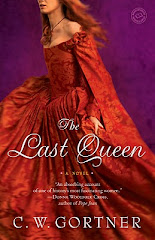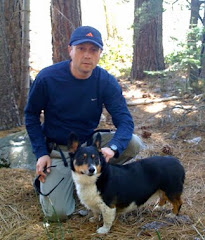In Dark Moon of Avalon, the former High Queen, Isolde, and her friend and protec
 tor, Trystan, are reunited in a dangerous quest to keep the usurper, Lord Marche, and his Saxon allies from the throne of Britain. Using Isolde’s cunning wit and talent for healing and Trystan’s strength and bravery, they must persuade even enemy rulers that their allegiance to the High King is needed to keep Britain safe. Steeped in the magic and lore of Arthurian legend, Elliott paints a moving portrait of a timeless romance, fraught with danger, yet with the power to inspire heroism and transcend even the darkest age.
tor, Trystan, are reunited in a dangerous quest to keep the usurper, Lord Marche, and his Saxon allies from the throne of Britain. Using Isolde’s cunning wit and talent for healing and Trystan’s strength and bravery, they must persuade even enemy rulers that their allegiance to the High King is needed to keep Britain safe. Steeped in the magic and lore of Arthurian legend, Elliott paints a moving portrait of a timeless romance, fraught with danger, yet with the power to inspire heroism and transcend even the darkest age.In celebration of her novel's release, Anna has kindly offered this guest post. Please join me in welcoming Anna Elliott!
From Politics to Potions: Writing Dark Age Arthurian Britain
by Anna Elliott
For me, the unique enchantment of the Arthurian legends lies in their blend of fantasy and history. The world of the King Arthur is a recognizably historical one, part of Britain's past, and in fact many scholars have explored the possibility of a real, historic Arthur--who, if he existed, was most likely a Celtic warlord of the mid fifth century, a warrior who led a triumphant stand against the incursions of Saxons onto British shores. Trystan, whose existence as a real historic figure is suggested by a memorial stone in Cornwall, was likely a roughly contemporary warrior, possibly the son of a Cornish petty king, whose cycle of tales were eventually absorbed into the legends growing up around Arthur and his war band.
And yet the world of the Arthur tales is one steeped in magic, as well. It's a world filled with the voices of prophecy, with enchanted swords and Otherworldly maidens and the magical Isle of Avalon, where Arthur lies in eternal sleep, healing of his wounds, waiting to ride once more in Britain’s greatest hour of need. That combination of historical truth with the wonderful potential for magic was what most of all drew me to the Arthur stories when I first studied them in college. And it was what delighted me about living
 in my own version of the Arthurian world while writing the Twilight of Avalon trilogy.
in my own version of the Arthurian world while writing the Twilight of Avalon trilogy.If Arthur did exist, he lived during the fifth century: a brutal, chaotic time in Britain. Roman Britain had crumbled; Rome's legions had been withdrawn from this far-flung outpost of the empire, leaving the country prey to invading Pictish and Irish tribes from the west and north and to Saxon invasions from the east. As brutal a time as it certainly was, though, this period was in many ways also a crucible in which the British identity and sense of place was forged.
I decided to set my story there, to make my particular Arthurian world grounded in what scraps of historical fact we know of Dark Age Britain. And I wanted to give that time period as accurate a portrayal as I could, 'warts and all' as the saying goes. Because that violence and chaos is at the root of the legends; it is against this particular backdrop that Arthur appears, a war hero who led a victorious campaign against the invaders and so inspiring the tales that still captures our imaginations today.
I wanted, too, to honor the magic of the original tales. Which is not as hard to fit in with historical fact as it may sound. The Dark Age worldview was a magical one, make no mistake. People in Dark Age Britain believed absolutely in magical forces in the same way we believe in the laws of gravity and that the world is round. Pre-Christian Celtic belief emphasizes the powers of trances and dreams that transcend physical boundaries and touch an Otherworld that is separated from our own by only the thinnest of veils. So my Isolde is the granddaughter of Morgan (sometimes known as Morgan le Fey in the original Arthur stories). Isolde is gifted through Morgan with both the knowledge of a healer and with the Sight, which enables her to receive visions and hear voices from the Otherworld.
And yet, there were those elements of the original Trystan and Isolde tale that were harder to fit in with any degree of historical verisimilitude. The second book of the trilogy, Dark Moon of Avalon, is the most romantic of the three books: the part of my own retelling in which I had to ask what treatment I was going to give the famous love potion, which in the original legend causes Trystan and Isolde to fall helplessly in love--but which is harder to make into a fact of a historically grounded Dark Age world! I decided on a more symbolic approach, which I've always felt is a way--though certainly not the only way--of reading the fantastical elements of the Arthurian tales. Dragons, for example, can be literal scaly monsters, but they can also be seen as a metaphor for the evil that exists outside the bounds of organized society. And a love potion like the one Trystan and Isolde accidentally imbibe can be viewed as a metaphor for the overwhelming, all-consuming nature of passionate romantic love.
In Dark Moon of Avalon, Trystan and Isolde journey together by boat, as in the original tale, and it is over the course of the journey that they deepen and develop their relationship, which again is true to the original legend. But the purpose of their journey is based on what scraps of historical fact we can gather about the shaky political situation of sixth-century Britain. And they don't need a literal draft of a magical potion to fall in love--only the magic of their own powerful emotional bond.
Anna Elliott is a longtime devotee of historical fiction and Arthurian legend. She lives in the Washington DC Metro area with her husband and 2 daughters. To learn more about Anna and her work, please visit her website.












No comments:
Post a Comment